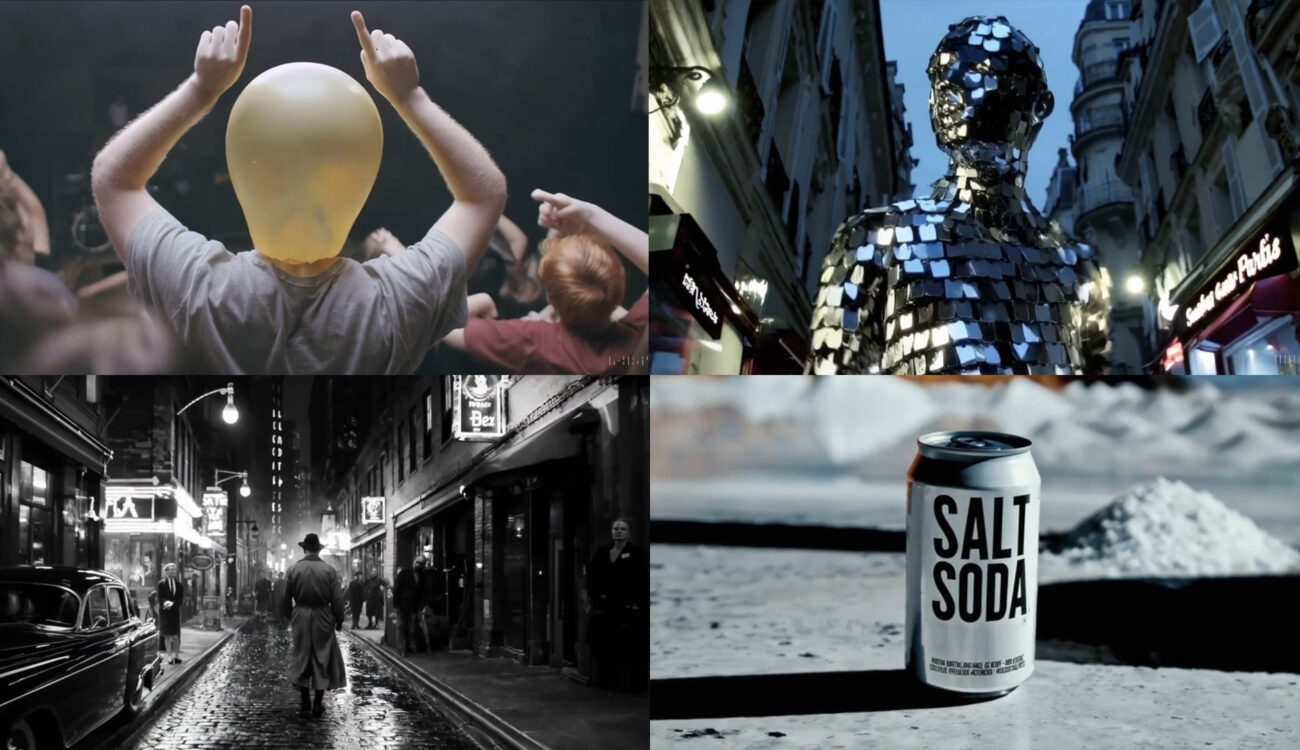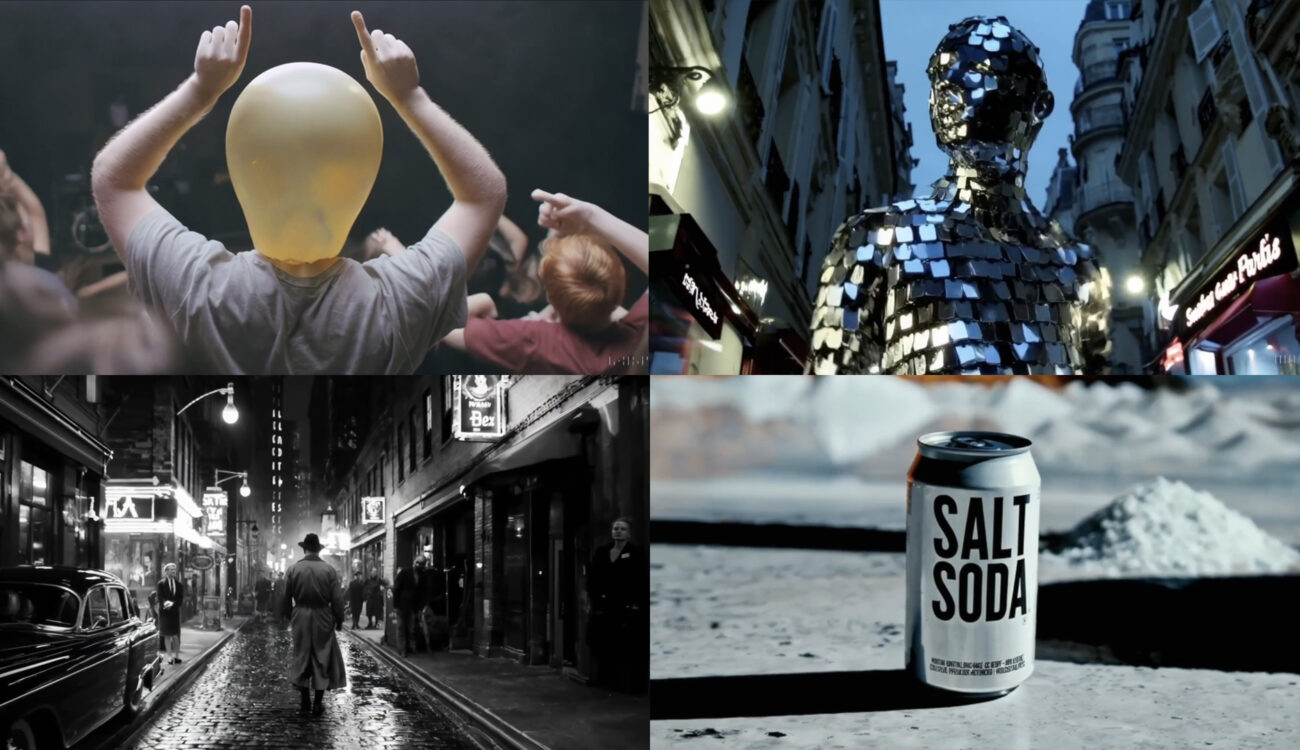

More than a month has passed since OpenAI announced their new AI video generator, but the discussions around it won‘t calm down. Apart from showcasing what Sora is capable of, the developers also granted beta access to different artists and filmmakers. Yesterday, the company shared their early impressions and some of the creative works, including the very first generated short film. Ready to see OpenAI’s Sora in action? Then keep reading, but beware that it might ignite mixed feelings (as it does in us).
In the post, OpenAI states that they’ve been “working with visual artists, designers, creative directors, and filmmakers to learn how Sora might aid in their creative process.“ Although they admit that their deep-learning model still needs many improvements, the following results offer a glimpse into the future that’s waiting for us around the corner. Is everything really as positive as all the beta-testers’ published thoughts are?
OpenAI’s Sora in action: entire short films
Of all the visual works chosen by OpenAI for their impressions publication, one stands out. It’s the short film “Air Head” by a small Toronto-based multimedia production shy kids. Creators decided to tell an original story of a balloon-headed man, using him as a metaphor for their own heads, filled with so many ideas they might pop. Take a look at it, keeping in mind that all the visuals here were made by AI:
Surely, it’s not the most consistent video you’ve seen in your life. Also, as the protagonist lacks a head, we cannot judge Sora’s ability to communicate relatable emotions and keep the character’s faces intact. Yet, in general, the idea works, and the initial story comes through.
As great as Sora is at generating things that appear real, what excites us is its ability to make things that are totally surreal. A new era of abstract expressionism.
Walter Woodman from shy kids, the director of “Air Head”
The feedback from artists and digital creators
Not only filmmakers were invited to look at Sora in action. A couple of artists and digital creators also took part in beta tests. For example, Josephine Miller, a Co-Founder and Creative Director of London-based Oraar Studio, which specializes in the design of 3D visuals, augmented reality, and digital fashion. Her experiment resulted in a futuristic outfit concept:
Josephine found that the main advantage of working with Sora was the ability to make rapid concepts with a high level of quality. Consequently, this tool enabled her to translate her imagination into something visual “with fewer technical constraints”. Multidisciplinary artist August Kamp agrees. Her quoted thoughts on OpenAI’s webpage are very similar, revolving around the freedom of artistic expression that Sora offers.
While it’s sweet to read inspired thoughts and lovely impressions, I can’t help but wonder: was all the feedback from beta testers so positive? Not so sure. A lot of artists are intimidated by AI and have noticed how it has already taken away some of their paid gigs. Remember a huge discussion sparked by the development of image generators like Midjourney? Using such tools as Sora for quick concept visualization is one thing. Selling its results as the final product is a completely different story.
OpenAI’s Sora in action: other applications
What I found interesting though is that some of the posted impressions show how OpenAI’s Sora in action could be helpful for other purposes. For example, sculptor Alexander Reben used the AI tool as a starting point to develop a 3D sculpture:
A multidisciplinary creator Don Allen III, (who worked for DreamWorks Animation, for example), also mentions the possibility of using Sora for prototyping:
For a long time, I’ve been making augmented reality hybrid creatures that I think would be fun combinations in my head. Now I have a much easier way of prototyping the ideas before I fully build out the 3-D characters to place in spatial computers.
Those two examples show that OpenAI’s Sora might be utilized for purposes other than just generating video content. As there are already AI tools on the market that allow the transfer of videos into, say, 3D models (LumaAI is one of them), the combination of those with Sora opens up new prospects for creators. If you want to see all the published work and early impressions of OpenAI’s Sora, head over here.
Mixed reactions from the creative community
Let’s come back to the short film “Air Head” real quick and scroll through the comments on the shy kids Instagram account where it was published. A lot of the reactions show excitement, awe, hype, and supportive emojis. However, if you take a closer look, you will also find enough critical responses and a bunch of important questions. Some of the commenters worry about the future definition of an artist, and whether it will be whoever shared or saw something first. Others point out more pressing matters:

While for some people, seeing OpenAI’s Sora in action means completely new and mindblowing possibilities for independent creators, others disagree, saying it will also lead to the loss of jobs. There is also a third kind of response that reflects mixed feelings. I guess it’s also the one I can relate to the most:
“We are going to be so saturated with art on every medium soon (music is coming), artists like me are starting to wonder how our value is determined and our need to express will be viewed. I’m both heartbroken and in awe, but get no personal pleasure in creating something with AI because I didn’t actually create it, and the world won’t know or care in the end as well.“
From one of the comments to the “Air Head”
The ethical question is still in the air
A further critical question that hasn’t been resolved so far is what sources OpenAI trains Sora on. This is generally a grey area in the realm of generative AI. That’s why when the company’s CTO Mira Murati couldn’t publicly answer whether they used YouTube videos or not, another round of heated discussion was launched. You can read about it here.
So, now that we’ve seen OpenAI’s Sora in action, what do you think about it? Do you agree with the first impressions of artists who tested it? Could you imagine integrating this tool into your projects? If so, how? Let’s discuss it in the comments below, but please, stay kind to each other.
Feature image: a collage from the visual works, generated by Sora. Source: OpenAI.






